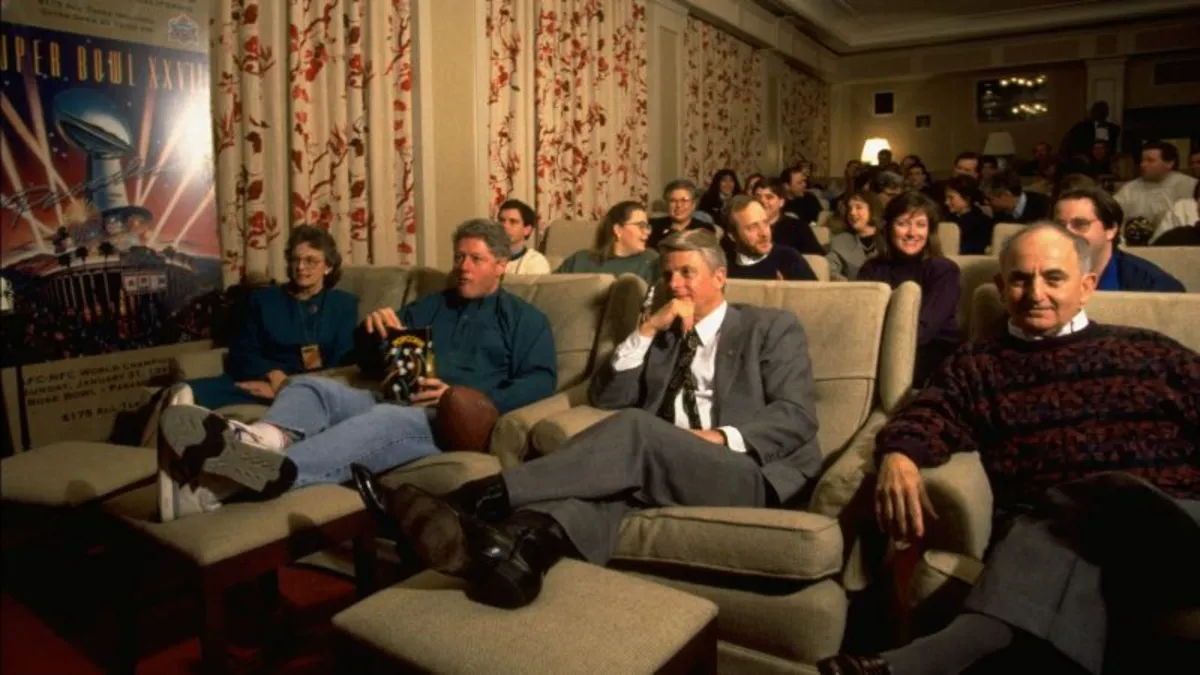
In a significant transformation at 1600 Pennsylvania Avenue, the White House Family Theater, a cherished venue for presidential entertainment, has been demolished. This week marked the end of an era as the theater, which originated in 1942 when a cloakroom was repurposed into a screening room, was dismantled to facilitate the construction of a new ballroom planned by President Donald Trump, estimated to cost around $300 million.
Since the latter part of Franklin D. Roosevelt’s presidency, the White House Family Theater has provided entertainment to countless presidents and their families. According to the White House Historical Association, Roosevelt was known to enjoy watching World War II-era news reels in this intimate setting, keeping a close eye on the battles occurring in Europe and Asia. He recognized the profound influence of pop culture, famously stating, “Entertainment is always a national asset. Invaluable in time of peace, it is indispensable in wartime.”
Prior to the establishment of the Family Theater, film screenings were held in the White House. Notably, President Woodrow Wilson screened the controversial 1915 film “The Birth of a Nation,” projecting it onto the walls of the East Room. Subsequent presidents continued this tradition, with the theater serving as a venue for both public and private film events. The George W. Bush Library highlights how these screenings ranged from official engagements with the public to intimate gatherings for the president, his family, and close associates.
Former President Bill Clinton fondly recalled the theater, stating, “The best perk out in the White House is not Air Force One or Camp David or anything else; it’s the wonderful movie theatre I get here, because people send me these movies all the time.” Over the years, the 42-seat theater underwent various aesthetic changes, transitioning from green chairs and mustard curtains to white chairs and floral drapes, ultimately adopting an all-red design.
The theater also hosted a variety of film genres, with notable incidents marking its history. In January 1977, President Jimmy Carter mandated that only “family-friendly” films should be screened. However, during the following Christmas, he inadvertently screened the X-rated film “Midnight Cowboy,” which focuses on the life of a male prostitute in 1960s New York City. This incident highlights the complexities of film curation within the White House.
Another memorable occasion occurred in 2011 when director Steven Spielberg recounted screening his iconic 1982 film “E.T.” for then-President Ronald Reagan. Spielberg remembered the evening with great fondness, mentioning the presence of notable guests, including Supreme Court Justice Sandra Day O’Connor and astronauts. Reagan appreciated the film, humorously acknowledging the truth behind its narrative.
The demolition of the White House Family Theater is part of a broader alteration to the East Wing, which has historically served as the First Lady's office and included significant architectural features such as a portico and a colonnade leading to the Executive Residence. The loss of this theater marks the end of a storied chapter in the cultural and entertainment history of the White House, a venue that brought joy and respite to those who held the highest office in the nation.
As the White House evolves, the legacy of the Family Theater will be remembered as a unique aspect of presidential life, illustrating the intersection of politics and popular culture throughout American history.